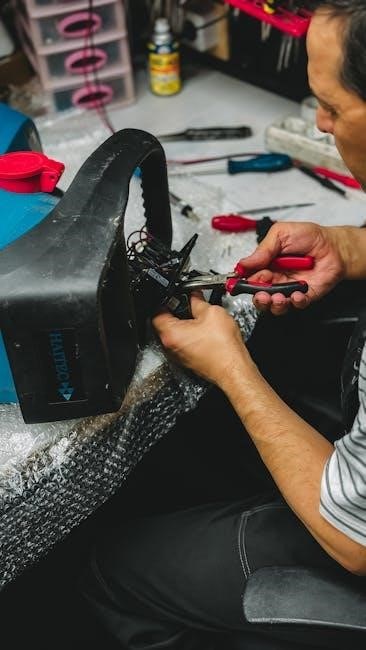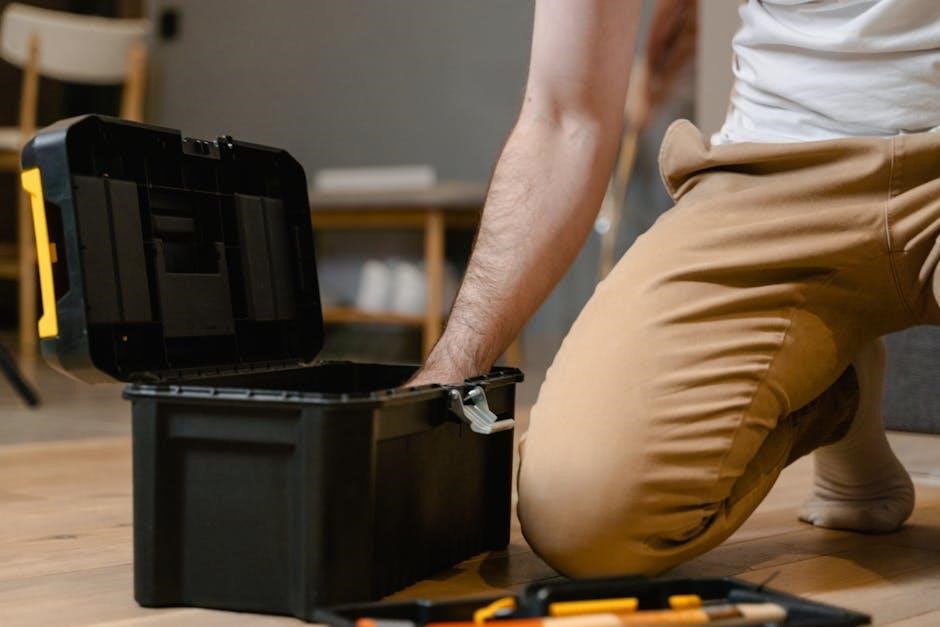is a manual defibrillator preferred for infants

Is a Manual Defibrillator Preferred for Infants?
Manual defibrillators are often preferred for infants due to their adjustable energy settings, providing safer and more controlled shocks. This customization is critical for infants’ delicate physiology, making manual devices the first choice in emergencies. If unavailable, AEDs with pediatric pads are recommended as an alternative.
The use of defibrillators in infants is a critical topic in pediatric emergency care, as cardiac arrest in this age group requires immediate and precise intervention. Defibrillators are essential for restoring normal heart rhythm in cases of shockable arrhythmias, such as ventricular fibrillation or pulseless ventricular tachycardia. While automated external defibrillators (AEDs) are widely used in adults and children, the unique physiological characteristics of infants raise important questions about the most appropriate device for their care. Manual defibrillators, which allow for adjustable energy delivery, are often highlighted as the preferred choice for infants. This preference stems from the need for tailored interventions that account for the smaller size and delicate physiology of infants. Understanding the differences between manual and automated devices, as well as their specific applications in pediatric emergencies, is crucial for healthcare providers. This section explores the rationale behind the preference for manual defibrillators in infants and the role of AEDs when manual devices are unavailable.

Understanding Manual Defibrillators
Manual defibrillators are medical devices requiring operator intervention to deliver a controlled electrical shock, restoring normal heart rhythm. They allow adjustable energy settings, crucial for infants, and require training for accurate use in emergencies.
Definition and Function of Manual Defibrillators

A manual defibrillator is a medical device designed to restore a normal heart rhythm by delivering an electrical shock to the heart. Unlike automated external defibrillators (AEDs), manual defibrillators require a trained operator to interpret the heart’s electrical activity, typically via an electrocardiogram (ECG), and manually activate the shock. This device is commonly used in clinical settings, such as hospitals, where healthcare professionals are present to operate it effectively. The primary function of a manual defibrillator is to treat life-threatening arrhythmias, such as ventricular fibrillation or pulseless ventricular tachycardia, by interrupting the abnormal electrical signals in the heart and allowing a normal sinus rhythm to resume. The ability to customize the energy level of the shock makes manual defibrillators particularly advantageous for vulnerable populations, such as infants, whose smaller body size and delicate physiology require precise intervention.

Comparison with Automated External Defibrillators (AEDs)

Manual defibrillators differ significantly from automated external defibrillators (AEDs) in terms of operation and functionality. AEDs are designed for use by laypersons and provide automated analysis of heart rhythms, delivering shocks without manual intervention. They are equipped with voice prompts and are intended for quick, straightforward use in emergency situations. In contrast, manual defibrillators require a trained healthcare professional to interpret the heart rhythm and decide when to deliver a shock, offering greater control over the timing and energy level of the defibrillation. This necessity for skilled operation makes manual defibrillators less accessible for public use but more precise in clinical settings. While AEDs are portable and user-friendly, manual defibrillators are typically larger and more suited for hospital environments. The choice between the two devices depends on the availability of trained personnel and the specific needs of the patient, particularly in cases involving infants, where manual defibrillators are often preferred due to their adjustable settings.

Why Manual Defibrillators Are Preferred for Infants
Manual defibrillators are preferred for infants due to their precision in delivering customizable energy levels, offering greater control during emergencies, and addressing the unique physiological needs of infants more effectively than AEDs.
Customizable Energy Delivery for Infants
Manual defibrillators offer the critical advantage of customizable energy delivery, which is essential for infants. Their smaller body size and delicate physiology require precise and adjustable energy levels to ensure safe and effective defibrillation. Unlike automated external defibrillators (AEDs), which deliver a fixed energy dose, manual defibrillators allow healthcare providers to tailor the shock to the infant’s specific needs. This customization minimizes the risk of under-shocking or over-shocking, both of which can be harmful to an infant’s fragile heart. Clinical guidelines emphasize the importance of using devices that can deliver lower, adjustable energy levels for infants, making manual defibrillators the preferred choice in such scenarios. The ability to fine-tune the energy output ensures that the treatment is both safe and effective, addressing the unique needs of infant cardiac emergencies.
Clinical Guidelines and Recommendations
Clinical guidelines consistently recommend the use of manual defibrillators for infants, particularly those under one year of age, when a shockable rhythm is identified. This preference is supported by major resuscitation councils and expert consensus. Manual defibrillators are favored because they allow trained healthcare providers to deliver a precise, adjustable energy dose tailored to the infant’s needs. The American Heart Association and other international guidelines emphasize that manual defibrillators should be the first choice for infant defibrillation in healthcare settings. If a manual defibrillator is unavailable, an automated external defibrillator (AED) with pediatric dose-attenuating pads or a pediatric mode is recommended. However, manual devices remain the standard of care due to their adaptability and control, which are critical in pediatric emergencies. These recommendations underscore the importance of proper training and equipment availability to ensure optimal outcomes for infants in cardiac arrest situations.
Greater Control During Emergency Situations
Manual defibrillators provide greater control during emergency situations involving infants, which is critical in such delicate cases. Unlike automated external defibrillators (AEDs), manual devices allow trained healthcare professionals to assess the infant’s heart rhythm and deliver a precisely timed shock. This capability is essential because infants’ cardiac conditions can be highly variable, requiring nuanced interventions. The manual mode ensures that the rescuer can interpret the electrocardiogram (ECG) and make informed decisions about energy dosage and timing. This level of control minimizes the risk of unnecessary shocks and optimizes the effectiveness of defibrillation. Furthermore, in complex cardiac arrest scenarios, the ability to synchronize shocks with the infant’s cardiac cycle can improve outcomes. This precision and adaptability make manual defibrillators indispensable in critical care settings, where every second counts and clinical judgment is paramount. The enhanced control offered by manual defibrillators aligns with the unique needs of infant resuscitation, making them the preferred choice in emergencies.
Specific Considerations for Infant Physiology

Infant physiology presents unique challenges that make manual defibrillators the preferred choice in emergencies. Infants have smaller body sizes, thinner chest walls, and more delicate cardiac structures compared to older children and adults. Their hearts are more susceptible to damage from inappropriate energy levels, necessitating precise control over defibrillation settings. Manual defibrillators allow healthcare providers to tailor energy delivery to the infant’s specific needs, reducing the risk of complications. Additionally, infants often experience rapid heart rates and arrhythmias that require immediate and accurate interventions. The ability to manually assess and adjust defibrillation energy ensures that the treatment is both safe and effective. These physiological differences highlight the importance of using devices that offer flexibility and precision, making manual defibrillators the optimal choice for infant cardiac emergencies. The customization allowed by manual devices aligns with the critical need to protect the infant’s developing heart during life-threatening situations.

The Role of AEDs When Manual Defibrillators Are Unavailable
When manual defibrillators are unavailable, AEDs with pediatric pads or dose attenuators are recommended for infants. These devices adjust energy levels to suit smaller bodies, ensuring safer use during emergencies.

Using AEDs with Pediatric Pads
When manual defibrillators are unavailable, AEDs equipped with pediatric pads are the recommended alternative for infants. These pads are specifically designed to deliver a lower energy dose, reducing the risk of harm to the infant’s smaller body. The American Heart Association and other medical guidelines emphasize the importance of using pediatric pads for children under 8 years old, as they adapt the AED’s energy output to a safer level. Proper training is essential to ensure the correct application of these pads and the operation of the AED. Although manual defibrillators are preferred due to their customizable settings, AEDs with pediatric pads provide a critical backup option during emergencies. Their portability and ease of use make them invaluable in situations where a manual device is not accessible. Always follow the device’s instructions and guidelines for infant care to maximize safety and effectiveness.

Importance of Training for AED Use in Infants
Proper training is crucial when using automated external defibrillators (AEDs) on infants, as incorrect application can lead to ineffective or harmful outcomes. While AEDs are designed to be user-friendly, understanding how to operate them correctly, especially for infants, requires specific instruction. Training ensures that rescuers can identify the need for defibrillation, apply pediatric pads appropriately, and deliver the correct energy dose. Infants’ smaller body size and delicate physiology demand precise pad placement to avoid unnecessary tissue damage. Additionally, training emphasizes the importance of continuing CPR and recognizing when an AED is necessary. Many guidelines stress that AEDs should only be used by individuals who have received proper instruction, particularly for pediatric cases. Without training, the risk of errors increases, potentially delaying life-saving interventions. Thus, AED training for infants is a critical component of emergency response and should be integrated into all CPR certification programs.
Manual defibrillators are preferred for infants due to customizable energy delivery, ensuring safer shocks. When unavailable, AEDs with pediatric pads are a suitable alternative. Proper training is essential for effective use in emergencies, emphasizing infant-specific care.
Manual defibrillators are strongly preferred for infants due to their ability to deliver customizable energy levels, which are essential for the delicate physiology of this age group. Clinical guidelines emphasize that manual defibrillators should be the first choice when available, as they allow healthcare providers to adjust settings according to the infant’s specific needs. If a manual defibrillator is unavailable, an automated external defibrillator (AED) with pediatric pads or a dose attenuator is the recommended alternative. Proper training is critical for the effective use of both devices, ensuring that rescuers can act confidently and correctly during emergencies. Adherence to established clinical guidelines is paramount to optimize outcomes for infants experiencing cardiac arrest. This approach balances the need for precision in energy delivery with the practical availability of life-saving devices in emergency situations.
Leave a Reply
You must be logged in to post a comment.